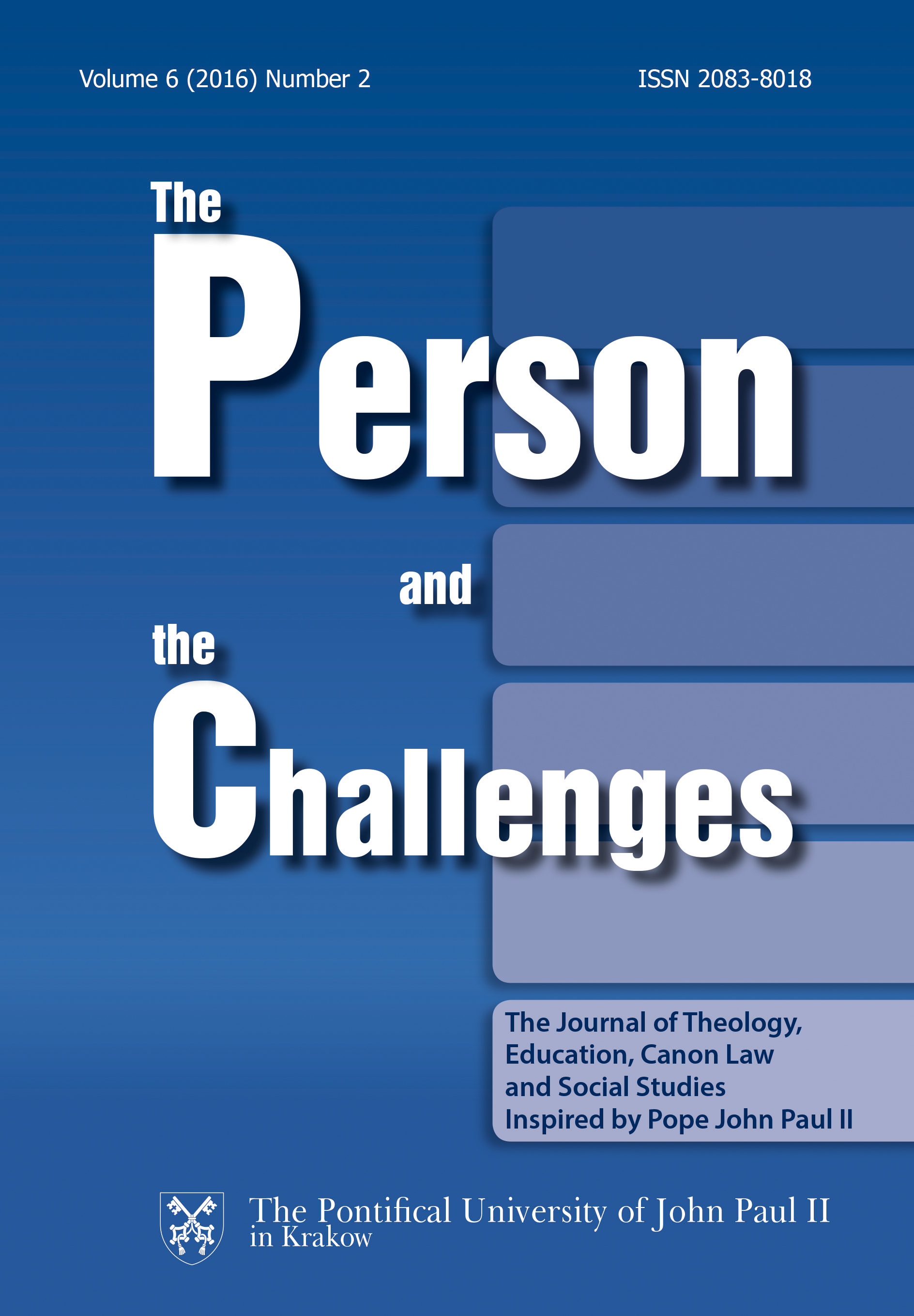Educating through Communities of Practice
DOI:
https://doi.org/10.15633/pch.1866Słowa kluczowe:
Catholic Schools, Communities of Practice, Constructivist Approach, Education, Situated LearningAbstrakt
The aim of this paper is to attempt at building a bridge between education and situated learning. The etymology of the word education outlines the two major ways of envisioning education. The meaning which we give to the term ‘education’ surely influences the ways in which the process of education unfolds and is actually conducted. The Constructivist Approach which is being used in education today is characterised by its studentcenteredness rather than teacher‑centeredness. The adoption of Communities of Practice from the industrial sphere to the realm of Catholic schools is a way in which education as bringing forth from the student (e‑ducere) and the constructivist approach developed earlier can be put into practice in Catholic Schools. Communities of practice create the right condition for situated learning in Catholic schools today. It is here that legitimate peripheral participation can be put into practice, thus fulfilling the Church’s mission of evangelisation in our contemporary culture by drawing students from the periphery of the educational endeavour, making them active participants at the core.Bibliografia
Arnett J.J. and Hughes M., Adolescence and Emerging Adulthood: A Cultural Approach, Harlow, England – New York 2012, Pearson.
Brooks J.G. and Brooks M.G., In Search of Understanding: The Case for Constructivist Classrooms, Alexandria, Va. 1993, Association for Supervision and Curriculum Development.
Congregation for Catholic Education, Circular letter to the Presidents of Bishops’ Conferences on Religious Education in Schools (5th May 2009). (online: http://www.vatican.va/roman_curia/congregations/ccatheduc/documents/rc_con_ccatheduc_doc_20090505_circ‑insegn‑relig_en.html) (07.03.2015).
Congregation for Catholic Education, Educating Together in Catholic Schools. A Shared Mission between Consecrated Persons and the Lay Faithful (8th September 2007). (online: http://www.vatican.va/roman_curia/congregations/ccatheduc/documents/rc_con_ccatheduc_doc_20070908_educare‑insieme_en.html) (07.03.2015).
Congregation for Catholic Education, The Catholics School on the Threshold of the Third Millennium (28th December 1997). (online: http://www.vatican.va/roman_curia/congregations/ccatheduc/documents/rc_con_ccatheduc_doc_27041998_school2000_en.html) (07.03.2015).
Congregation for Catholic Education, The Religious Dimension of Education in a Catholic School. Guidelines for Reflection and Renewal (7th April 1988). (online: http://www.vatican.va/roman_curia/congregations/ccatheduc/documents/rc_con_ccatheduc_doc_19880407_catholic‑school_en.html) (07.03.2015).
Congregation for the Clergy, General Directory for Catechesis (15th August 1997). (online : http://www.vatican.va/roman_curia/congregations/cclergy/documents/rc_con_ccatheduc_doc_17041998_directory‑for‑catechesis_en.html) (06.03.2015).
Davis E., BBC – Today: Evan Davis: Addressing the Chair. (online: http://www.bbc.co.uk/blogs/legacy/today/evandavis/2009/04/addressing_the_chair.html) (02.03.2015).
Lave J. and Wenger E., Situated Learning: Legitimate Peripheral Participation. Learning in Doing, Cambridge England – New York 1991, Cambridge University Press.
Murphy E., Characteristics of Constructivist Learning and Teaching. (online: http://www.ucs.mun.ca/~emurphy/stemnet/cle3.html) (06.03.2015).
Paul VI, Apostolic Exhortation Evangelii Nuntiandi (8th December 1975). (online: http://w2.vatican.va/content/paul‑vi/en/apost_exhortations/documents/hf_
p‑vi_exh_19751208_evangelii‑nuntiandi.html) (06.03.2015).
Pellerey M. and Grządziel D., Educare. Per una Pedagogia Intesa Come Scienza Partico‑Progettuale, Enciclopedia Delle Scienze Dell’Educazione, 2nd ed., Roma 2011, LAS.
Pellerey M., Educare. Manuale di Pedagogia come Scienza Pratico‑Progettuale, Roma 1999, LAS.
Prellezo J.M., Guglielmo Malizia and Carlo Nanni, eds. Dizionario di Scienze dell’Educazione, 2nd edition, Roma 2008, LAS.
Santrock J.W., Adolescence. 13th ed., New York – London 2009, McGraw‑Hill.
Santrock J.W., John W., Children, 12th ed., New York, NY 2013, McGraw‑Hill.
Scaffolding Definition – The Glossary of Education Reform (online: http://edglossary.org/scaffolding) (01.04.2015).
Steinberg L.D., Adolescence, 9th ed., New York 2010, McGraw‑Hill.
Sue R., The Importance of Child‑Centred Learning (online: https://suite.io/rebecca‑
sue/20bc2ag) (06.03.2015).
Teacher‑Centered vs. Student‑Centered Education. (online: http://education.cu‑portland.edu/blog/classroom‑resources/which‑is‑best‑teacher‑centered‑or‑student‑centered‑education) (06.03.2015).
Teaching with the Constructivist Learning Theory. (online: https://www.nde‑ed.org/TeachingResources/ClassroomTips/Constructivist%20_Learning.htm) (07.03.2015).
Vygotsky L.S., Mind in Society. The Development of Higher Psychological Processes, edited by Cole, Michael, Vera John‑Steiner, Sylvia Scribner and Ellen Souberman, Cambridge, Massachusetts – London 1978, Harvard University Press.
Wenger E., McDermott R.A., and Snyder W., Cultivating Communities of Practice: A Guide to Managing Knowledge, Boston, Mass. 2002, Harvard Business School Press.
Pobrania
Opublikowane
Numer
Dział
Licencja
Prawa autorskie (c) 2016 Carl-Mario Sultana

Utwór dostępny jest na licencji Creative Commons Uznanie autorstwa 4.0 Międzynarodowe.
Autorzy publikujący w czasopiśmie udzielają jego wydawcy zgody o następującej treści:
- Autor zachowuje autorskie prawa majątkowe do utworu, a jednocześnie udziela wydawcy czasopisma zgody na jego pierwszą publikację w wersji drukowanej i wersji online na licencji Creative Commons Uznanie autorstwa 4.0 Międzynarodowe oraz zgody na wykonywanie opracowań, w tym przekładów.
- Autor ma możliwość udzielania zgody niewyłącznej na opublikowanie utworu w wersji, która ukazała się w czasopiśmie (np. zamieszczenia go w repozytorium instytucjonalnym lub opublikowania w książce), wraz z informacją o jego pierwszej publikacji w czasopiśmie.
- Autor może umieścić swój utwór online (np. w repozytorium instytucjonalnym lub na swojej stronie internetowej) jeszcze przed zgłoszeniem utworu do czasopisma.

